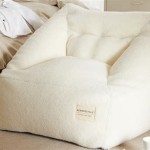```html
Best Mantel Decor Ideas: A Guide to Elevating Your Fireplace
The mantel, often the focal point of a living room, presents a unique opportunity to showcase personal style and elevate the overall aesthetic of a space. Effective mantel decor seamlessly blends form and function, drawing the eye and creating a warm, inviting atmosphere. The key to successful mantel styling lies in understanding principles of balance, color harmony, and texture, while also considering the existing architecture and personal preferences. This guide explores a variety of mantel decor ideas, providing practical advice on creating a visually appealing and cohesive display.
Balancing Symmetry and Asymmetry for Visual Harmony
One of the fundamental decisions in mantel decor involves choosing between a symmetrical or asymmetrical arrangement. A symmetrical design, characterized by mirror-image elements on either side of a central focal point, exudes a sense of formality and order. This approach works particularly well in traditional or classically styled homes. To achieve symmetry, consider placing identical objects, such as candlesticks, vases, or framed artwork, at equal distances from the center. The central element might be a large mirror, a striking piece of art, or a collection of smaller items grouped together.
Asymmetrical arrangements, on the other hand, offer a more relaxed and contemporary feel. They rely on the visual weight of objects rather than exact duplication. This approach involves balancing items of different sizes and shapes across the mantel, creating a dynamic and visually interesting composition. For example, a large sculpture on one side could be balanced by a grouping of smaller objects, such as books, plants, and decorative boxes, on the other. The key is to ensure that the overall arrangement feels balanced to the eye, even though the elements are not identical.
The choice between symmetry and asymmetry depends largely on personal preference and the overall style of the room. Experimenting with both approaches is recommended to determine which best complements the space and reflects individual taste. Regardless of the chosen approach, maintaining a sense of visual balance is crucial for creating a harmonious and appealing mantel display.
Incorporating Color and Texture for Depth and Interest
Color and texture are essential elements in creating a visually rich and engaging mantel display. The color palette should complement the existing decor of the room, while also adding pops of interest and personality. Consider using a combination of neutral tones and accent colors to create a balanced and harmonious look. For example, a mantel in a room with cool gray walls might benefit from warm-toned accessories, such as brass candlesticks, wooden bowls, or terracotta pots. Conversely, a room with warm-toned walls might be enhanced by cool-toned accents, such as blue glass vases or silver picture frames.
Texture adds another layer of depth and interest to the mantel display. Incorporating a variety of textures, such as smooth glass, rough wood, soft textiles, and shiny metal, can create a tactile and visually stimulating effect. Consider adding a chunky knit throw blanket draped over the edge of the mantel, a collection of textured pottery, or a piece of driftwood to introduce natural elements and varying textures. The juxtaposition of different textures can create a sense of visual intrigue and make the mantel display more dynamic.
When selecting colors and textures, it is important to consider the season and the overall mood of the room. For example, during the fall and winter months, warm tones and cozy textures, such as velvet, wool, and faux fur, can create a welcoming and inviting atmosphere. In the spring and summer months, lighter tones and natural textures, such as linen, cotton, and seagrass, can evoke a sense of freshness and airiness. By carefully considering the color palette and the incorporation of different textures, it is possible to create a mantel display that is both visually appealing and reflective of the season.
Strategic Placement of Objects: Layers, Height, and Scale
The strategic placement of objects on the mantel is crucial for creating a visually appealing and balanced display. Understanding the principles of layering, height, and scale is essential for achieving a cohesive and harmonious arrangement. Layering involves arranging objects in front of and behind each other, creating depth and dimension. Start by placing larger items in the back, such as artwork or mirrors, and then layering smaller items in front, such as candles, plants, or decorative objects.
Varying the height of objects on the mantel adds visual interest and prevents the display from appearing flat. Consider using candlesticks, vases, or stacked books to create different levels. Placing taller objects towards the center and gradually decreasing the height towards the edges can create a sense of visual balance. However, avoid creating a rigid or uniform height distribution, as this can make the display appear static and uninteresting.
Scale refers to the relative size of objects in relation to each other and to the mantel itself. It is important to choose objects that are appropriately sized for the mantel and the surrounding space. Overly large objects can overwhelm the mantel and make the room feel cramped, while overly small objects can get lost and appear insignificant. A good rule of thumb is to use a mix of large, medium, and small objects to create a visually balanced and proportional display. Consider the overall dimensions of the mantel and the scale of the surrounding furniture when selecting objects for the mantel display.
The arrangement should not obstruct the view of the fireplace opening. The primary function of the fireplace should not be overshadowed by the decorative elements. Ensuring proper clearance and spacing is essential for both safety and visual appeal.
Ultimately, successful mantel decor is a reflection of personal style and a celebration of individual preferences. By understanding the principles of balance, color harmony, texture, and object placement, it is possible to create a visually stunning and captivating mantel display that enhances the overall aesthetic of the room. Experimentation and personalization are key to creating a mantel that is truly unique and reflective of individual tastes.
Consider seasonal changes and holidays as opportunities to refresh the mantel display. This provides a chance to incorporate new colors, textures, and themes, ensuring that the mantel remains a dynamic and engaging focal point throughout the year. Thoughtful planning and attention to detail will transform the mantel into a cherished element of the home.
```
30 Stylish Fall Mantel Decor Ideas Best Autumn Decorations

36 Fireplace Decor Ideas Modern Mantel

10 Fireplace Mantel Decorating Ideas Full Service Chimney

5 Winter Mantel Ideas Stonegable

How To Decorate A Mantel Like Pro Easy Styling Tips From Tidbits Twine Home Decor Fireplace Mantle

30 Diy Fall Mantel Décor Ideas Best Decorations
:max_bytes(150000):strip_icc()/cozy-fall-mantel-decorating-5dfcd9f83cbc45c9ab67357fe2b52b40.jpeg?strip=all)
28 Fall Mantel Decorating Ideas To Make Your Hearth More Homey

40 Best Mantel And Fireplace Décor Ideas

50 Cozy Fireplace Ideas Best Mantel Decor

Mantel Decorating Ideas For Every Month Of The Year Modern Glam
Related Posts







